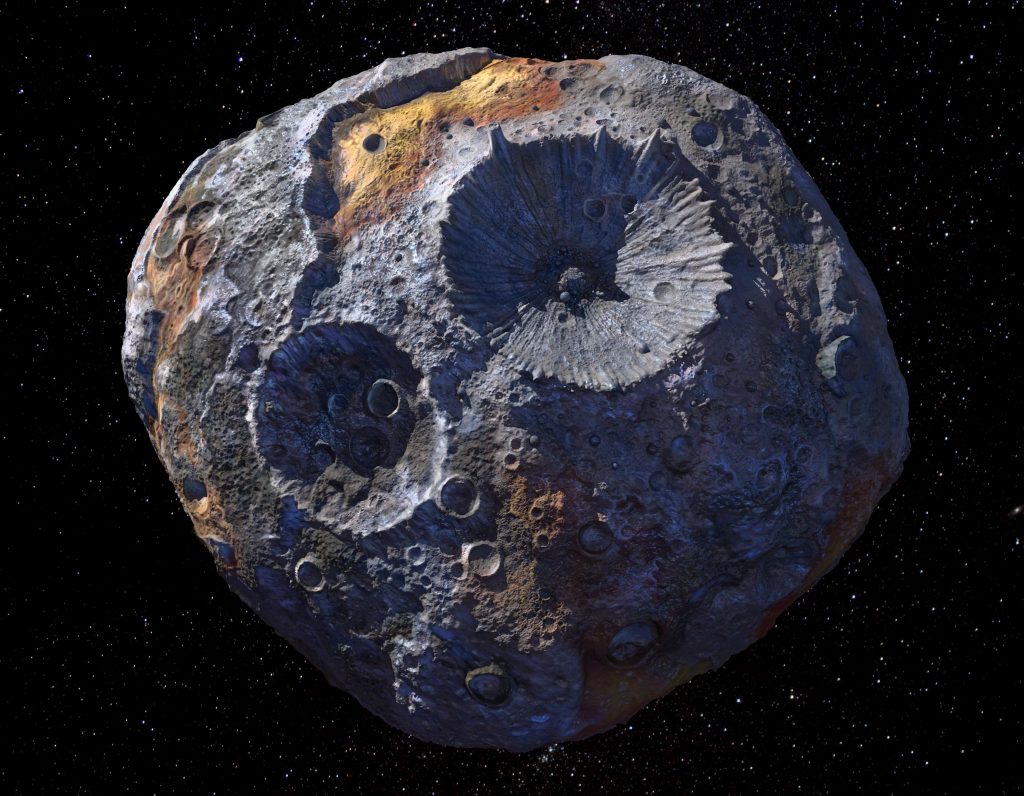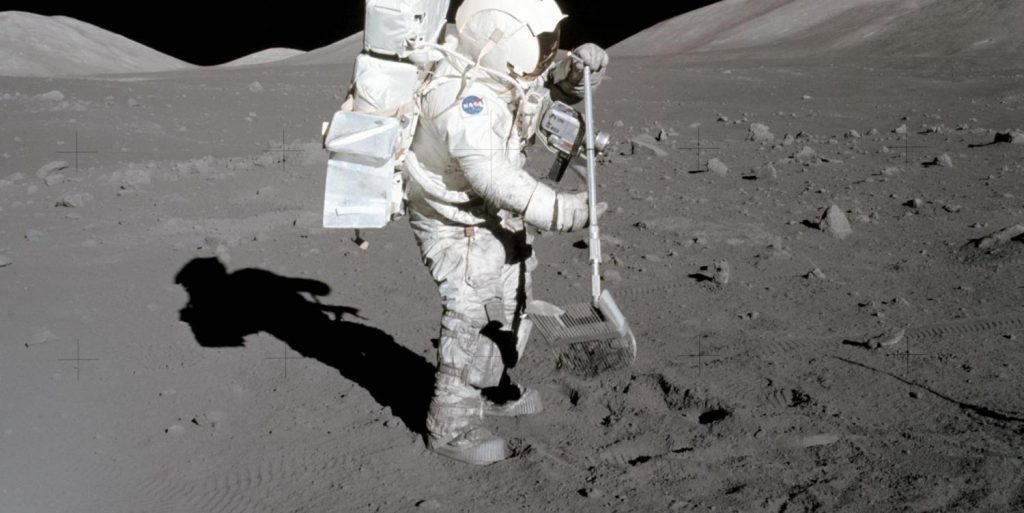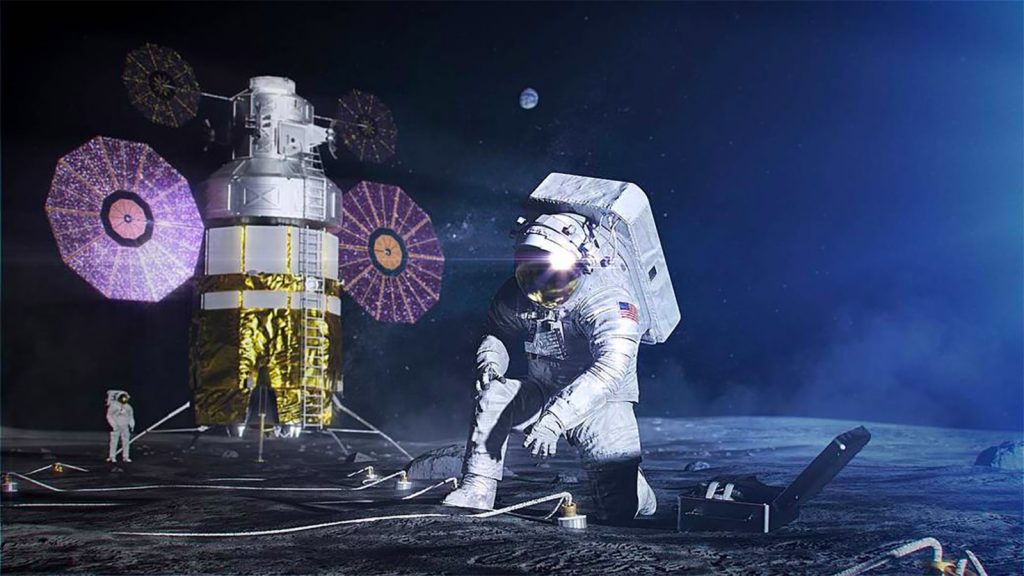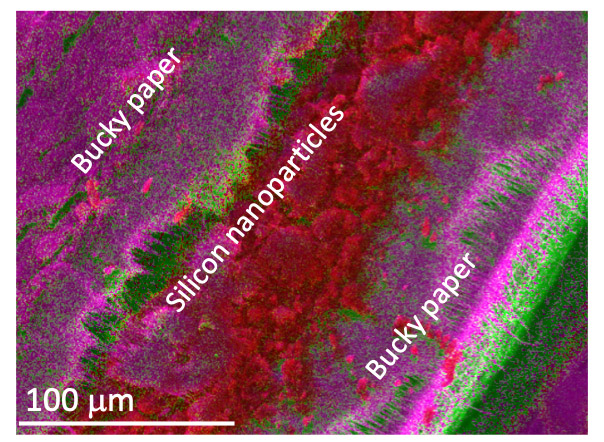Media
Transcript
No need to check your calendars, everyone. It really is Tuesday. Pamela and I have traded days this week for a couple of reasons: 1) almost all the press releases we got yesterday are embargoed until Thursday and 2) they were all about galaxies and black holes and whatnot. You have, if you saw my Community Coffee last week, seen what damage I will do to astrophysics.
Instead, I am going to update you on various planetary science missions and potential new technologies for future missions. Unlike Pamela, I will talk about spacecraft before they are launched. I invest early, folks, and I am easily excited by the mere prospect of planetary exploration.
Let’s get to this then.
Lucy, the upcoming mission to asteroid Psyche, has been approved by NASA to enter its final development stage, which means Lucy gets to go from design and fabrication to much more interesting activities such as delivery, testing, assembly, and integration. We get to build a spacecraft, y’all!

The building commenced on August 10 at Lockheed Martin in Colorado. Next up for Lucy is the Mission Operation Review in October. That is when the team will have to demonstrate that the spacecraft’s navigation, planning, command, and science operations requirements have been met.
The spacecraft is expected to be shipped next July for final integration with the launch vehicle. The launch window opens on October 16, 2021. Per the press release: Lucy will still have a long path ahead flying out to the distance of Jupiter to make close fly-bys past a record-breaking number of asteroids. The spacecraft will encounter the first of its eight targets, a main belt asteroid, in 2025. Lucy will reach the first of seven Trojan asteroids in 2027 and fly past the final binary pair in 2033.
As always, we will bring you the launch when it happens and the science when it comes in.
Even before Lucy reaches the main asteroid belt, NASA is planning to have astronauts on the Moon again. And as anyone who studies Moon missions will tell you, one of the biggest issues is regolith or Moon dust. The stuff gets everywhere, and since the Moon doesn’t have the same weathering processes that we do here on Earth, the tiny, tiny pieces are jagged and sharp. They can cause microtears in spacesuits and damage equipment. Engineers and scientists have been trying to solve the regolith problem for decades.

Research associate Xu Wang explained, “The problem with lunar dust is that it isn’t anything like the stuff that builds up on bookshelves on Earth. Moon dust is constantly bathed in radiation from the sun, a bombardment that gives the material an electric charge. That charge, in turn, makes the dust extra sticky, almost like a sock that’s just come out of the drier. It also has a distinct structure.”
Now, a team of researchers led by the University of Colorado at Boulder has discovered a potential dustbuster, if you will – electron beams.
Basically, the idea is to use the charge on the regolith against itself by bombarding it with more negative charges. These charges pile up in the space between the particles, and eventually, like magnets of the same polarity, the dust pushes itself away from the surface of an object.
To test the concept, various items were coated in a “lunar simulant” created by NASA to act like the lunar dust. These items were then placed in a vacuum chamber and hit with the electron beam. Per the press release: The dust poured off, usually in just a few minutes. The trick worked on a wide range of surfaces, too, including spacesuit fabric and glass. This new technology aims at cleaning the finest dust particles, which are difficult to remove using brushes. The method was able to clean dusty surfaces by an average of about 75-85%.
While the technology isn’t ready, yet, scientists are hopeful that, in the future, electron showers could be a solution to a, well, sticky problem.
Now that we have potentially solved the regolith problem, and we’ve decided to put people on the Moon, how do we power up vehicles and even spacesuits for long missions? Heavy batteries are hard to carry. Solar panels can get covered with dust. No one wants to run out of electricity for vital systems while out in the field.
A group of scientists at Clemson University has been working on creating smaller, lightweight, fast-charging batteries to use in mission vehicles, spacesuits, and even satellites. Assistant professor Ramakrishna Podila explained: Most satellites mainly get their power from the sun, but the satellites have to be able to store energy for when they are in the Earth’s shadow. We have to make the batteries as light as possible, because the more the satellite weighs, the more its mission costs.

Take, for example, a lithium-ion battery. To be rechargeable, the lithium ions have to be able to move from the negative side to the positive side and back, and they do this through an electrolytic medium between the two electrodes. Picture the negative side as a deck of graphite cards, incredibly thin and stacked together. The problem with using graphite is that it doesn’t store much charge. It’s great for smaller items like cell phones and electric vehicles, not so great for satellites or locations without easy access to regular charging.
The team decided to use silicon instead since it can pack more charge; however, silicon degrades with repeated charging and discharging, breaking down into smaller and smaller particles. Not very good for long-term usage. And that, friends, is where the brilliance of this development comes in.

Per the press release: The solution the team came up with involves the use of tiny silicon “nanosized” particles, which increase stability and provide longer cycle life. Rather than a deck of cards made of graphite, the new batteries use layers of a carbon nanotube material called Buckypaper, with the silicon nanoparticles sandwiched in between.
Now, no matter how much the silicon wants to break down, it’s trapped and electrically connected between those layers of carbon nanotubes. And because the silicon is used as nanoparticles, the battery can be charged more quickly than one using graphite sheets can be.
They managed to make batteries lighter that charge more quickly and have a larger charge capacity. Go, Tigers, indeed.
Finally, I am rounding out the show with an interesting image of Mars, brought to us by the beloved Curiosity Rover.
It’s the windy season on the red planet, and that means increased aeolian activity at the surface. Additionally, it’s almost summer in Gale Crater, and the surface is heating up, causing stronger convection currents than at other times of the Martian year. This leads to convective vortices, which, per the mission update blog: consist of fast winds whipping around low-pressure cores. If those vortices are strong enough, they can raise dust from the surface and become visible as “dust devils” that we can image with our cameras.
The animated GIF here shows a dust devil movie taken with Curiosity’s Navcam and covering a period of about five minutes. You can see the wispy dust devil moving through the upper third of the GIF from left to right.
Dust devils. On Mars, y’all. I love planetary science.
Learn More
Lucy Mission to Trojan Asteroids Approved for Final Development
Researchers develop dustbuster for the moon
- CU Boulder Today article
- “Dust mitigation technology for lunar exploration utilizing an electron beam,” B. Farr et al., 2020 8 August, Acta Astronautica
Scientists create batteries that could make it easier to explore Mars
- Clemson University press release
- “Three-Dimensional Si Anodes with Fast Diffusion, High Capacity, High Rate Capability, and Long Cycle Life,” Shailendra Chiluwal et al., 2020 8 July, Applied Materials and Interfaces
Curiosity spies dust devil on Mars
Credits
Written by Beth Johnson
Hosted by Beth Johnson
Audio and Video Editing by Ally Pelphrey
Content Editing by Beth Johnson
Executive Producer Pamela Gay
Intro and Outro music by Kevin MacLeod, https://incompetech.com/music/


 We record most shows live, on Twitch. Follow us today to get alerts when we go live.
We record most shows live, on Twitch. Follow us today to get alerts when we go live.